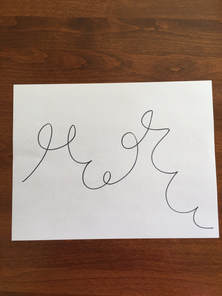Vocalizing
- Dana Lentini

- Apr 8, 2019
- 4 min read
Updated: Aug 5, 2019

Singing is the most fundamental way to make music. How can voice teachers share technical advice with even the youngest and most rudimentary students, while keeping the “fun” in fundamental? The essential ingredient for teaching young singers is to lay a strong foundation.
Laying a good foundation in technical singing skills for even the tiniest singer does not mean that the young singer will be working on formant tuning, loud belting or advanced resonance strategies. It does mean that the young singer will learn how their voice works and how they can understand sensations and the changes they can make in their own instrument.
There are lots of great technical exercises that kids can enjoy while learning how their voice works. To make it fun and meaningful, I like to use props in my studio. A basket on my piano holds all kinds of fun gadgets. Some of the toys I use are scarves, kazoos, straws, and resistance bands, to name just a few.

These particular gadgets are used to directly help facilitate technical understanding. I find that using semi-occluded vocal exercise helps a young singer gain understanding in the idea of vocal registers. Semi-occluded exercises also help with coordination between the registers. All teachers have different ways of expressing and teaching technical information to their students. The most important thing to achieve in vocal training with kids is helping the singer to recognize physical sensations, and to help them feel a difference in the adjustments they make.
Using a straw to create vocal expression lines is one of the semi-occluded vocal exercises that helps kids learn basic skills and is definitely fun! I usually start by drawing a curved line on a piece of paper with a low point that rises to a peak and arches back down. I have the student sing through a straw, shaping the sound to match the line. I then ask the student to draw their own lines, and believe me when I say…..things can get crazy and silly! Some of the technical benefits you can explore with vocal expression lines are range, volume, breath management and expression.
I also like to use kazoos. I will have a student sing through a melody on a kazoo, which allows the voice a chance to rest and eases the student into the melody by introducing efficient breath flow, rhythm, and vocal line. Extracting the text makes it easier to work on technique and musical ideas. Follow that with working on text alone as a great way to teach good articulation and rhythmic accuracy.
**One of the key elements when working with young singers is to keep in mind……. duration and intensity. These are two of the most important rules when working with prepubescent voices.
One of the concerns about working with young voices is the potential of vocal damage. There is no way to cause vocal harm if the singing is healthy. One way to make sure that healthy singing is encouraged is to make sure that you pay attention to the duration and intensitythat a young singer is applying. It is ok to let them belt, just not for long durations and with overt intensity. It is ok to let them sing out, so long as they are not prolonging the duration of this physical activity. Using straws and kazoos is a great way to build endurance, which holds back the intensity and is definitely fun!
Another technical aspect that I apply with really young singers, and older singers too, is diction exercises. I use several tongue twisters as well as other fun tongue and articulation exercises. Silly tongue twisters are a super fun way to lay a great foundation in articulation. Getting control and understanding of the tongue position is an essential skill to learn early.
I do believe that if we start off teaching young singers by laying a good foundation in appropriate skill sets, we as voice teachers can offset some of the bad technique that older singers pick up over the years, especially when they only spend time modeling their favorite pop star.
To lay that strong foundation in healthy singing habits I have created a short list of technical elements that should be introduced to young singers of any age. Technical goals to aim for with young singers:
Develop clear speaking and phonation habits
Introduce vocal registers
Teach a basic understanding of the vocal anatomy (two vocal folds as the source of vibration)
Maintain an open throat and learn how to change the space in the pharynx
Teach them to sustain tone with breath and sing with energized tone
Teach adjustment coordination between vocal registers
Children are constantly using their voices and exploring sounds both high and low, and loud and soft, every day while on the playground and at home. Why shouldn’t they learn the “hows and whys” of what they are doing, especially if they are interested in singing? Teaching good vocal production at an early age also has proven to help the meek and reluctant behaviors often gained through the awkward puberty stage. If a young singer has already laid a good foundation and understanding of vocal production pre-puberty, they will naturally have an easier time through the growth change that will eventually occur in their voice.
These exercises and strategies listed above are found in the category of “Vocalizing” which is the 4th stage of the Born 2 Sing Kids Sequence. For more technical strategies regarding breath management with young singers, please see my previous blog post “Respiration.”
Perhaps you have some technical skills for your young singers that you use. Please feel free to share your thoughts and strategies that you are integrating with your pre-pubescent singers. You can also join in great discussions on our Facebook group “Voice Teachers for Young Singers.” As always, thanks for reading and please share my blog with your colleagues.
Happy Singing!




